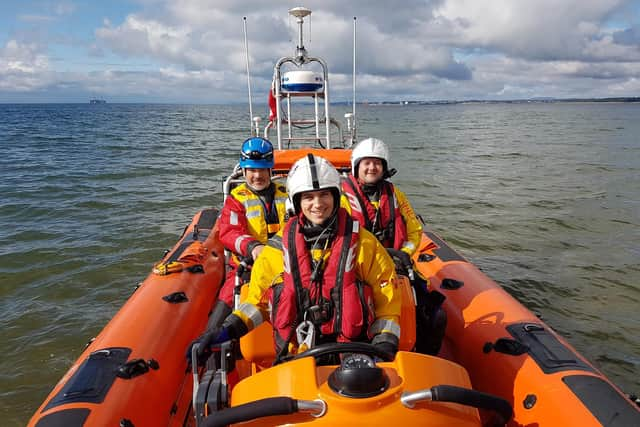Kinghorn RNLI records 50% rise in the number or call outs last year
and live on Freeview channel 276
The crew stationed at Kinghorn, which is manned by volunteers, was busiest of the two stations in Fife, with figures showing that it logged 83 call-outs last year - a jump up from 53 in 2019, and 50 in 2018.
Further up the coast in the East Neuk of Fife, volunteer crews from Anstruther RNLI Lifeboat Station dealt with 33 call-outs, recording a drop of 18% from the 40 it handled in 2019.
Advertisement
Hide AdAdvertisement
Hide Ad

Fife had over just over 1000 call-outs between 2008 and 2020, with the Kinghorn station handling well over half of them with no fewer than 649 launches.
According to the RNLI’s database, between 2008 and 2020 the charity responded to more than 112,000 call-outs across the United Kingdom.
Each year the RNLI responds to an average of 8,634 emergency call-outs across the UK, Republic of Ireland and the Channel Islands.
The lifesaving charity has issued a warning to people to take care in open water as lifeboat crews continue to deal with increased rescues due to the renewed popularity of wild swimming.
Advertisement
Hide AdAdvertisement
Hide AdWith more people and families opting for a staycation instead of travelling abroad due to the ongoing COVID-19 pandemic, Fife’s beaches and rivers have been busy with holidaymakers as well as locals looking to escape to the coast after multiple lockdowns.
With the Kingdom of Fife boasting some of the most picturesque coastline in the UK, many people flock to the shore to make use of the region’s many beaches.
However, despite the increasing popularity of wild swimming and watersports, many people are unaware of the dangers that open water can pose and can find themselves in trouble and needing to be rescued.
The dangers of swimming in open water are clear, and in recent weeks scores of people have died as a result of getting into trouble in open water.
Advertisement
Hide AdAdvertisement
Hide AdHead of water safety at the RNLI, Gareth Morrison, said that last year was one of the charity’s busiest yet.
“Last year and the summer of 2021 was one of the busiest ever for our lifeguards and volunteer lifeboat crews,” he said.
“We want people to enjoy the coast but urge everyone to respect the water, think about their own safety and know what to do in an emergency.
“Our main advice is to visit a lifeguarded beach and swim between the red and yellow flags. ”
Advertisement
Hide AdAdvertisement
Hide AdMr Morrison advised the following to stay safe this summer: "Visit a lifeguarded beach and swim between the red and yellow flags.
“If you get into trouble Float to Live – lie on your back and relax, resisting the urge to thrash about, and in case of an emergency call 999 and ask for the Coastguard.”
Thank you for reading this article on our free-to-read website. We're more reliant on your support than ever as the shift in consumer habits brought about by Coronavirus impacts our advertisers.
Please consider purchasing a subscription to our print newspaper to help fund our trusted, fact-checked journalism.
Comment Guidelines
National World encourages reader discussion on our stories. User feedback, insights and back-and-forth exchanges add a rich layer of context to reporting. Please review our Community Guidelines before commenting.
